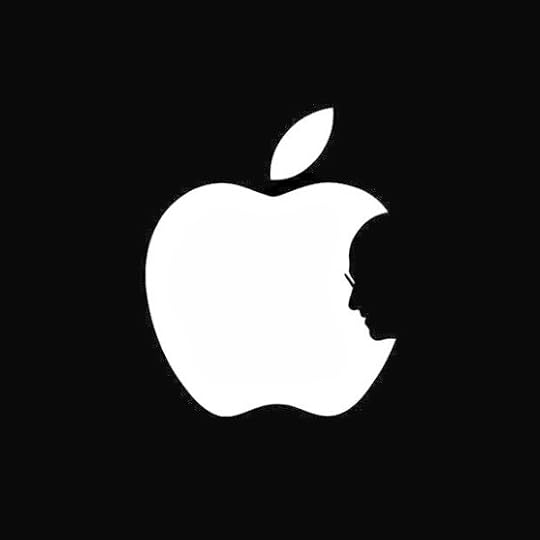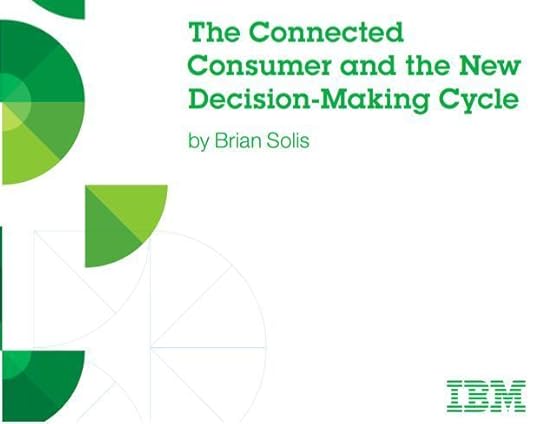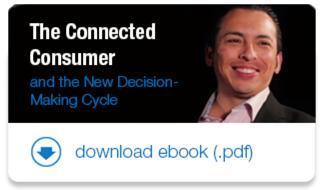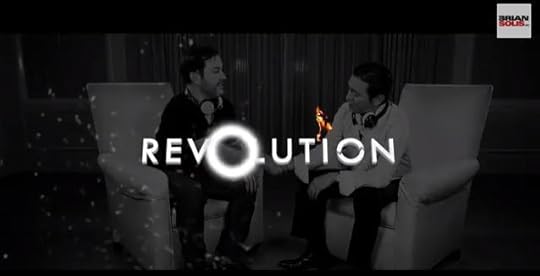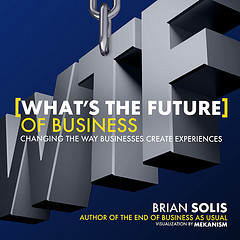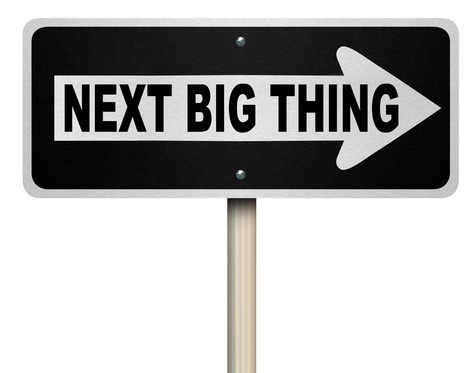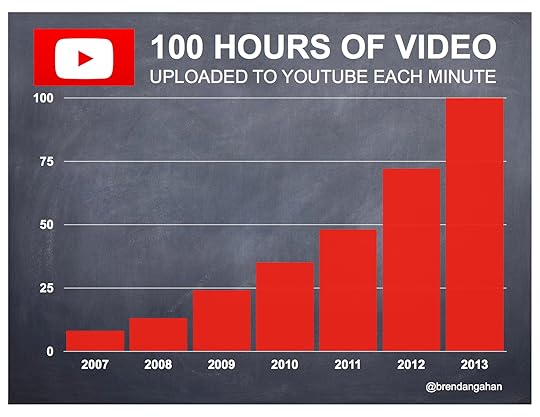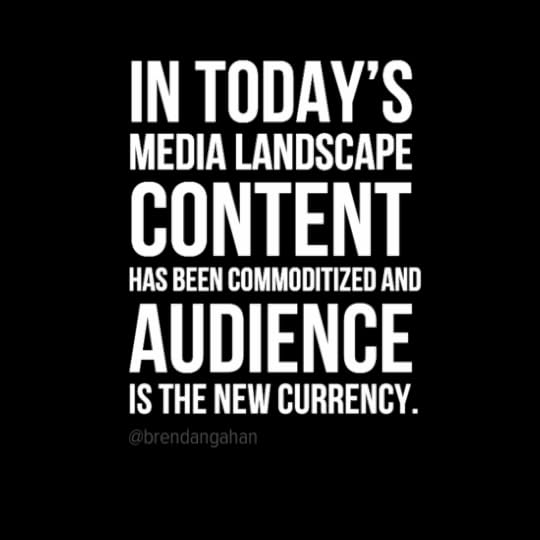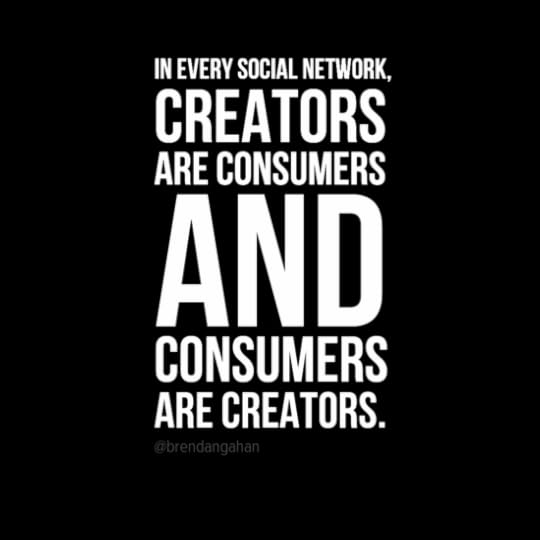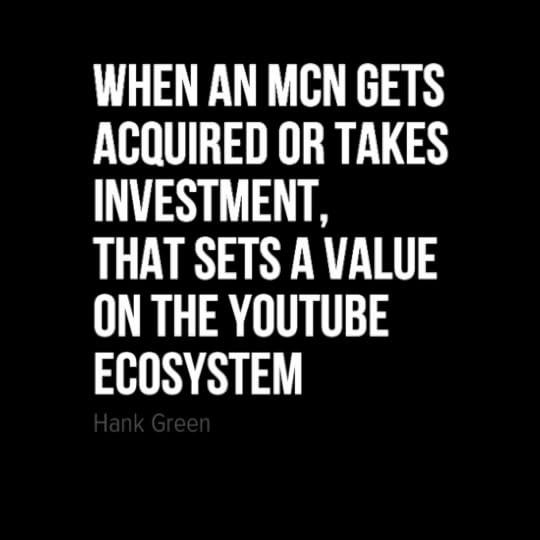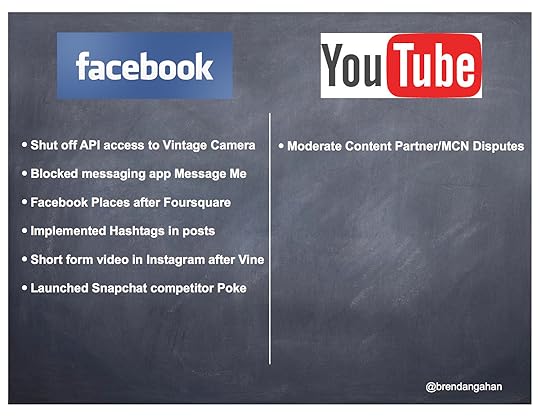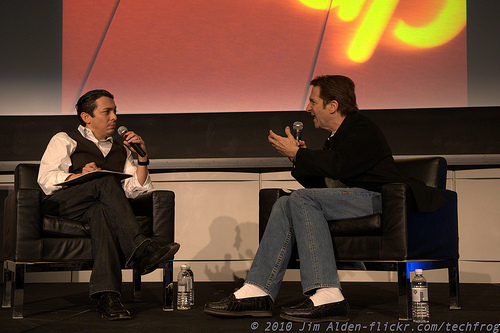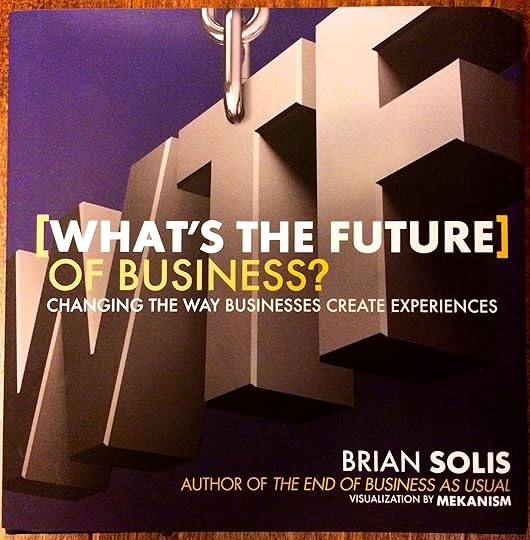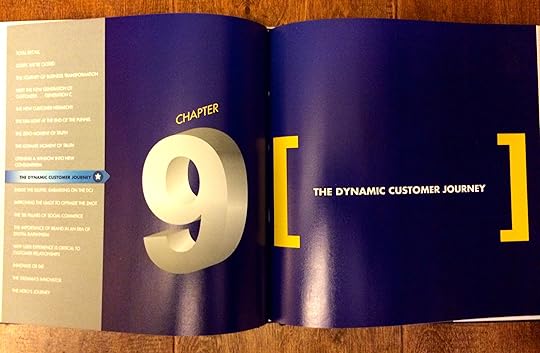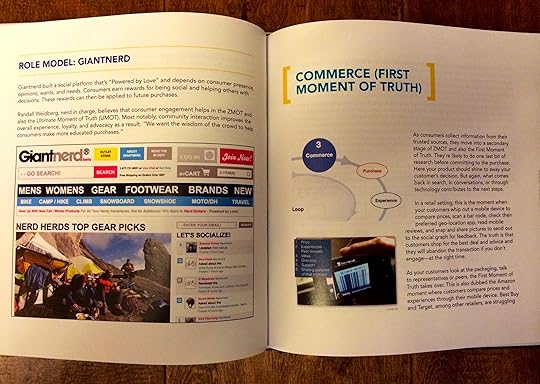Brian Solis's Blog, page 113
February 6, 2014
The Quality Prism: The secret to co-creating brands through social media
Guest post by Greg Narain (@gregarious) co-founder of Chute, a company that helps brands discover or collect relevant photos from social networks and incorporate the visuals into their websites and apps
Brands finds themselves at a challenging crossroads in their evolution. For decades, companies have utilized a command and control model as it pertains to their brands. Billions of dollars have been spent to carefully craft specific messages and deliver them via campaigns. However, as consumers continue to create and promote their own stories, brands now must decide how to integrate that content into their own stories.
At the heart of the matter is control. Brands are accustomed to crafting their message and controlling the way that message is delivered to the world. In fact, the entire marketing vehicle is hardwired to function on this very specific level. The quality of any campaign has become a metric of success, both financially for the business and as industry recognition for the agency.
Forward-looking brands, however, see a different opportunity in letting go of some of that control. Social networks have already proven an effective platform for distributing media. At the same time, consumers continue to demonstrate their creativity and capability to produce authentic, engaging content. The combination is hard to ignore, but the question of quality still persists.
Quality is like a prism – what you see is highly dependent on your vantage point. For marketers and publishers still constrained by their own idea of quality, the value of customer-centric stories is still impossible to see or understand. Others understand that customers are now telling interesting, relevant stories, but they cannot get past the lack of polish and quality. A growing minority, though, have learned the secret to unlocking this content.
Quality must be viewed through the lens of the consumer, not our own. If we focus on our own internal standards of perfection, we miss out on the opportunities to promote and leverage authentic content. The test of quality isn’t the aesthetics or production, but the value it creates. To that end, encouraging your customers to co-create with you provides you a broader base of content to draw from.
During the Visual Revolution Summit, I sat down with my friend Ben Huh — who is fairly familiar with what it takes to create a meme or go viral as the founder of Cheezburger. You can watch our discussion below and share your thoughts on the Quality Prism with #VisualRevolution on Twitter.
Here are some tips on how to get started:
1. Boost customer contributions
Your customers may not be professional photographers or writers, but they’re out there making content for you nonetheless. These contributions are real-time, authentic, and engaging – even if they don’t meet the same standard of quality brands are accustomed to publishing.
2. Incentivize
Getting quality content sometimes means rewarding the creators. This doesn’t mean you have to start raffling off huge prizes. Engagement in and of itself can be a reward – interact, retweet, compliment and promote.
3. Minimize risk
Create your brand voice and stick to it – even if it means you have to skip a meme, viral sensation, newsworthy moment or customer content. Keep it light, keep it classy. When it comes to tragedy or sensitive topics, if you’re unsure, just don’t post. Case in point: the backlash after AT&T’s 9/11 Facebook and Twitter post that came off more as a cold marketing tactic than a respectful tribute. A brand who got it right? The New York City Ballet, who created this moving film. It’s easy to fall into a scandal when rushing to jump into the discussion around a sensitive topic.
4. Move fast, (don’t) break things
Taking inspiration from the famous Facebook mantra, the cycles between iterations needs to be shortened. Often, the latest on Buzzfeed is already old news to Tumblr users, and what’s new on Tumblr is often already old news to Reddit users. And this transition from funny to old? That can happen in the matter of a day, which is also why real-time content from fans is so powerful. However, keep in mind point #3: faster publishing doesn’t mean the values or identity of the brand should be compromised.
The ultimate measure of how successful any tactic is remains the same: does it align with your goals and deliver as expected? There will always be a need for high-quality, professionally crafted marketing and branding. However, as consumers continue to tell their story with greater fidelity, there is an additional source of content (or minimally inspiration) to leverage for your brand.

February 3, 2014
Apple Still Lives in the Shadow of Steve Jobs and That’s a Problem for Its Future
Don’t be fooled by the coming iWatch.
Don’t see Apple’s new TV product as the dawn of a new era of Apple innovation.
The new products you’re going to see from Apple this year and next are the final new designs coming to fruition from Steve Jobs’ vision. And, that means that in just a few short years, Apple is at risk of losing its throne as the world’s most valuable brand.
Think about this for a moment…what happens after these products fall into the same iterative cycle of the current line of Apple products such as the iPad, iPhone, MacBooks and Mac Pros?
As an investor, stakeholder or simply as a fan of thinking differently and challenging the status quo, where’s the vision that will define Apple’s next legacy?
In a recent discussion about the future of Apple, I heard something that is becoming all too common these days. “I sold my shares in Apple,” muttered a chief marketing executive of a global spirits brand. He then sighed, “I’m losing my faith.”
In a post-Jobs era of innovation, I, like many others, wonder whether Apple’s current position as the world’s most valuable business has run its course. Yet Apple continues to perform notably hovering close to its 52-week high of $575.14, an impressive 67% stronger than its 52 week low of $385.10. Granted, $575 is generous these days considering its commanding $702.10 price on September 19, 2012. In a recent article in USAToday, Analyst at Brean Capital Frank Longman shared his professional assessment that Apple is “becoming just another stock.” He too believes, “The phenomenon is unwinding.”
Is the Magic Gone?
I guess the answer depends on whether you place your value in historical performance or in futures. Certainly Apple’s recent performance is helping the company recoup billions in market capitalization. And, other analysts are taking notice. Research firm UBS upgraded its position in December 2013 from Neutral to Buy. In October 2013, wealth management and private equity firm Robert W. Baird upgraded its position from Neutral to Outperform.
None of the above changes in status or outlook answer the question though of whether or not Apple’s magic is fading. Financial performance is not enough to restore my faith in the company’s ability to enchant customers and markets. With the passing of Jobs, Apple lost a public leader and a voice for change. He was not only a visionary, he was also a convincing showman, equally captivating customers and investors.
Tim Cook is a proven CEO and was hand-picked by Jobs to helm his juggernaut. Although charming in his own right, Cook is not a gifted showman nor visionary. More so, Cook is not an architect of the future and without the gift of vision and persuasion, he cannot communicate the future of Apple. This missing link is affecting the company’s potential and testing the faith of Apple’s devoted fans. As the world’s highest paid CEO, Cook’s leadership is set to be tested in just a few years.
Why?
Incrementalism vs. Innovation
Since the passing of Jobs on October 5, 2011, Apple has demonstrated a product release pattern that communicates a culture of incrementalism versus that of innovation. Thinking back to the past two-plus years, we’ve seen incremental changes in the company’s flagship products ranging from the iPhone to iPads and MacBook Pros and MacBook Airs. The company’s greatest innovation is courtesy of the Mac Pro, which initial technology reviews place it in a league of its own. Even with a dramatic redesign and groundbreaking performance, the cylindrical dynamo remains progressive rather than inventive.
Beyond incremental product releases, market share advances only help prolong the inevitable. Apple’s pre-holiday agreement with China Mobile to supply it with the latest iPhone 5s and iPhone 5c sent the stock up 3% on December 23, 2013.
In fact, each product is garnering greater market share.
But, where’s the “next big thing?”
Prior to his passing, Steve Jobs knew that Apple could lose its shine, and more so, its dominance if the company shifted into cruise control and ceased disrupting or inventing markets. He was after all a visionary. Many believe he was even a genius. Many eventually learned that he also jerk. As author Walter Isaacson noted in his best-selling biography Steve Jobs, there was a “good Steve” and also a “bad Steve.”
Skate to Where the Puck Will Be: The Four Year Roadmap
Regardless of what he was like to work with, Jobs competed for the future instead of the moment or the next earnings report. At the Macworld Conference and Expo in January 2007, Jobs famously quoted Wayne Gretzky, “I skate to where the puck is going to be, not where it has been.” He then shared that his mantra for Apple was to always do just that.
Shortly after his death, reports circulated that the Jobs left plans for four years of new products. Additionally, he also fought to safeguard plans for the company’s spaceship-inspired headquarters in Cupertino.
For years, rumors have circulated around the infamous iWatch and other wearables, TVs or TV-related products, gesture-based controls, in-car platforms or perhaps even iCars, etc. Based on Apple’s recent hiring and acquisition movements, educated deductions point to the enlivening of some part of these rumors or something altogether new in the near-term.
In September 2013, Nike’s famed FuelBand designer Ben Shaffer joined Apple’s supposed wearable project.
In November of this year, Apple acquired PrimeSense a 3D motion-tracking company behind the first Microsoft Kinect sensor.
Also in November, Burberry’s turnaround queen Angela Ahrendts joined Apple to spearhead strategy, expansion and operations of its retail and online stores.
What does each move have in common beyond a shared employer? They now possess the opportunity to create history.
Even Steve Jobs left us with a tease about the future. In his biography, Isaacson quotes Jobs as revealing a hint about his vision for the future of television, “I’d like to create an integrated television set that is completely easy to use,” he told Isaacson. “It would be seamlessly synced with all of your devices and with iCloud.” Isaacson shared that this ultimate product would no longer make users fiddle with complex remotes for DVD players and cable channels. “It will have the simplest user interface you could imagine. I finally cracked it,” exclaimed Jobs.
If speculation around Apple’s product pipeline is true, the company’s future will indeed be bright and shareholder value will again mount. Certainly wearable devices from Apple will change consumer behavior. A TV could be a game changer and a TV-related product would disrupt the cable industry. I’m sure there’s another product under the veil of secrecy that Jobs envisioned. Combined, these products will remind us of the eminence of its once artful leader.
But what happens after this supposed four-year plan?
“Death is very likely the single best invention of life. It’s life’s change agent. It clears out the old to make way for the new.”
Steve Jobs once said, “Death is very likely the single best invention of life. It’s life’s change agent. It clears out the old to make way for the new.” In a post-Jobs Apple, the company now needs its change agent to shift from mourning and incrementalism to innovation.
Tim Cook should be commended for his work in steering Apple toward lucrative waters in what was a disconcerting time following the passing of Steve Jobs. Success though takes more than promises, stellar progress reports, and positive financial outlooks. Competing for the future takes leadership. Although Tim is promising “big things” for the company in 2014, it is 2015, 2016 and the years after that I question.
This is Apple’s time to think out of the orchard. Acquire Tesla and secure its chief visionary Elon Musk! Crazy? Veteran tech analyst at Berenberg Bank Adnaan Ahmad, wrote an open letter to Cook and Apple Chairman Art Levinson on October 25 suggesting just that. If anything, it’s this kind crazy thinking that demonstrates the limitless boundaries in which Apple can move.
Stay Hungry. Stay Foolish
Raise the pirate flag.
Raise the anchor.
And set sail into bold new waters…once again.
Apple wasn’t just another great tech or consumer electronics brand; it became a lifestyle and a pinnacle for creative aspiration and innovation. As such, Apple needs more than the next Steve Jobs. The company needs someone who can see beyond what Steve secretly left behind; someone who can “put a dent in the universe.”
See, Jobs wasn’t just another great business leader. He captivated the world’s imagination. He set out to challenge the status quo. He urged people to think differently. As of now, the church of Apple is without its preacher. To change that though, Apple must become much more vocal, more daring, and give the world something to believe in again. This takes more than company memos and analyst calls. To survive beyond Steve’s alleged four-year roadmap, the company must not only “stay hungry,” it must also “stay foolish” and persistently remind us that brave words supported by diligent actions can also instill faith and confidence.
The conversation continues…
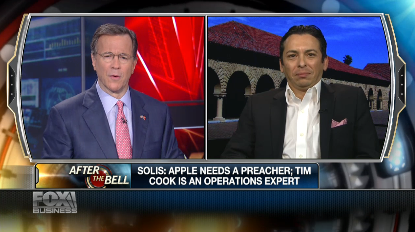
FOX Business’ After the Bell asked me to share my thoughts on the state and fate of Apple. Watch the segment here.
Connect with me: Twitter | LinkedIn | Facebook | Google+ |Youtube | Instagram
Image credit: Jonathan Mak

January 29, 2014
Empowering Employees with Social Media Improves Customer Relationships and Grows Revenue
Employee empowerment is about creating brand advocates to scale customer relationships and effectively compete in new digital markets. Organizations can no longer rely on inbound and outbound sales reps, people willing to jump through hoops and obstacles via call centers, or traditional marketing to boost awareness and demand. Customers demand engagement, in real time, and that takes human beings, training, and support.
In January 2014, the San Francisco Chronicle, one of the country’s oldest remaining metropolitan newspapers, opened a technology incubator. The declining but still important media company is investing in a rigorous digital boot camp for reporters to learn how to use social and mobile media to boost views, amplify sharing, and increase views and engagement. The Chronicle has no choice. Circulation plummeted 50% between 2009 and 2012. Revenue too is just not what it used to be. More importantly, readership is no longer the same as it was. Gripping headlines, animated GIFs, infographics, punchier copy, and innovative content marketing techniques are changing how people read and also how and what they share.
This move sends a loud and alarming message to executives everywhere, “adapt or die.” And to do that, businesses need to embrace not only new technology but also empower employees to engage with customers and stakeholders in the places where their attention is focused in ways that are culturally relevant. Employees must add value in every touch point and at every moment of truth throughout the customer lifecycle if they hope stay competitive.
The truth is that we live in a digital economy now and how people connect with businesses isn’t just changing, it’s continually evolving. There isn’t just one new strategy or technology investment that helps you become relevant though. Merely flocking to social media isn’t enough. Launching mobile apps without vision or purpose isn’t effective. To compete, organizations have to understand customer preferences, behaviors, technology, and their evolving preferences and expectations in real life and in each online network they use to make decisions and share experiences.
With or without you, customers will talk to one another online. They already are to great extent. Even the quiet customers will find the engagement of others instructive. The point is that without you, they will make decisions and form impressions either for or against you. Why leave it to chance?
For years now, experts have begged companies to embrace social media to build bridges to customers where they’re already engaged. And for years, many businesses have experimented with stepping outside of owned media channels to engage with customers in social networks and online communities. For those who know what they’re doing, success has been reeled in the form of improved customer satisfaction, referrals and sales, and loyalty…basically, everything that matters.
So what’s standing in your way?
Fear of risk?
Lack of confidence or ROI?
Ask yourself, what’s the risk of you not engaging? The answer is as stark as it is true. If you don’t compete for relevance, you by default open the door to irrelevance as customers eventually go elsewhere or competitors step in to help.
What of the ROI of empowering employees to engage customers in social channels? Aside from the aforesaid benefits, what’s the ROI of ignorance?
There are great benefits for any organization that realizes that the initial return on engagement and experience is more valuable relationships and reciprocity. That equates to increases in customer lifetime value and also referrals.
In either case, reward is great for those empower employees to reach beyond the everyday customer engagement strategies of laggard companies that ignore the perils or opportunities of digital Darwinism. Thankfully there are companies that help other companies adopt new technologies not because of trendiness but instead to do great things.
Brand Case Study – H&R Block
SF Chronicle is not alone in its play to compete in this digital economy. Enterprise social media management software provider Expion shared a convincing example of how a leading financial services company empowered 100,000 employees to engage customers in social and mobile platforms. Out of the gate, such an example would prove almost impossible. 1) Financial services is bound by regulation and lawyers are extremely reticent to rock the boat, 2) 100,000 employees presents scale and risk challenges, and 3) budget and training to enable so many employees to be effective would be astronomical.
H&R Block sees customer engagement is a powerful and effective form of service and public relations. In fact, H&R Block believes the entire workforce is part of the PR and marketing team. To “deputize” them, H&R Block partnered with Expion to co-develop a mobile app, H&R Block Publisher, that connects helpful social content to clients seeking direction. As you can imagine, during tax season H&R Block representatives are in high demand every tax season. By empowering them to share useful content that speaks to the tax and money issues that are important to clients and also answer question, the program developed deeper and more meaningful relationships with clients.
Scott Gulbransen, Director of Social Business Strategy for H&R Block views employee empowerment as a direct link to customer relationships, “They [H&R Block reps] are already seen as trusted resources to their friends and family. By our corporate team offering tips, it takes the ‘marketing’ out of the equation…it’s relationship-based value add.”
Said another way, representatives are able to earn trust beyond their friends and family. They now extend their communities to also build trust and relationships with clients.
In both the SF Chronicle and H&R Block examples, empowering employees is an investment in relevance and relationships with social and mobile serving as an engaging platform for connecting with customers. Good intentions are just the beginning. What we’re also building here is trust and value and that is priceless. But doing so isn’t a stationary gesture. It’s an investment that requires commitment and ongoing support to scale. In the process, you learn more about the evolving expectations and behaviors of your connected (social and mobile) customers. And by learning to engage with them on their terms, in their networks of preference, in ways that are mutually beneficial, everyone wins. More so, everyone learns and grows together. And that’s what social is about…empowerment, engagement and relationships.
10 Steps to get started on the path to social and mobile relevance…
Care.
Identify where your customers are spending most of their time online and mobile.
Learn what they are asking and how their questions are being answered and by whom.
Run an audit to see who from your team is already engaging and observe what’s working and what’s not.
Put together a pilot recommendation to earn buy-in from an executive sponsor. Make sure to outline the benefits on all sides and the expected business outcomes.
Develop content and engagement strategies that matter. Introduce value, share useful but engaging information, entertain, and engage.
Invest in technology that facilitates seamless engagement and scale.
Train employees before you turn them loose on technology, expectations, best practices and performance measurement.
Test and learn.
Repeat.
Connect with me: Twitter | LinkedIn | Facebook | Google+ |Youtube | Instagram
Originally published at Expion.

January 27, 2014
4 Steps to Connecting with—and Engaging—Generation C

Connected, empowered consumers—also known as of Generation C—have come to expect businesses to know them, to understand them, and to deliver what they want, where, when and how they want it.
I recently published an ebook with IBM, The Connected Consumer and the New Decision-Making Cycle, that explores the new decision making cycle of connected customers. You can download it for free here. Thanks IBM!
The goal of the ebook, and also this post, is to introduce readers to the differences that exist between touch points that connected customers rely upon to make decisions or inform those of others and those in which many organizations are investing. The idea of course is to discover new ways to realign investments while improving customer experiences and relationships. Even with this information however, it takes champions to make the case internally and bring together disparate groups that control various aspects of customer engagement today.
Together, we can learn and share, how businesses can adapt and lead the future of customer experience.
They demand superior service, competitive prices, and quick delivery. And when they don’t get what they want, their friends, followers and fans hear all about it.
How can you effectively communicate with this audience? You can start by realizing that we’re all part of Generation C (it’s not an age group, it’s a digital lifestyle), and in order to make the link, you need to think like a connected marketer.
Here are the four steps I view as essential when it comes to engaging with this elusive audience.
1. Don’t Be Shy: Getting Comfortable with Digital Exhibitionists
Members of Generation C are virtual attention-seekers. Everything they do, think and experience is shared through multiple networks. Breakfast is blogged about, breakups are broadcast, and if there aren’t any pictures, it didn’t happen. The good news? You no longer have to guess which messages will be relevant to your audiences. You can study conversations and connections and use up-to-the-minute insights to inform global, national, and hyper-local campaigns that resonate with customers.
2. One to One: Understanding Each Unique Customer
Once you’ve captured the attention of your customers and gained their interest—even kindled their desire—how do you move them to take action? By tapping into the wealth of insight that your customers give you during every step of their journey. Rather than forcing everyone through the same chute, your marketing, sales, and service should act as trusted guides, helping each customer along an individual path.
3. Shopping is Social: Finding Friends and Gaining Trust
Everyone is talking about your brand behind your back. That is, unless you’re tuning in to the right networks. Your potential customers are asking questions in social networks, comparing prices using mobile apps, reading real-time reviews, and watching videos with product information. They might decide to buy—or not to buy—without ever interacting with your brand. But you can’t just force your way in to the conversation.
4. The Future Funnel: Developing a New, Dynamic Customer Journey
By aligning your marketing and service strategies with the needs of Generation C, you can become a trusted partner to your customers as they shop and buy. And when every channel and message lines up with precisely what they’re looking for, exactly when they need it, you’ll gain more than loyalty and trust. You’ll transform your marketing strategy—as well the way you do business.
Connect with me: Twitter | LinkedIn | Facebook | Google+ |Youtube | Instagram
Photo credit: MJTH / Shutterstock

January 21, 2014
Build Experiences Not Just Products
Music is the one thing that accompanies me on my journeys, experiences, as well as my adventures in writing. While earbuds deliver sound, they do not deliver the essence of the song, the waves of sound, nor the soul of the artist. At the same time, I have a hard time justifying the need to buy overly expensive headphones just to enjoy music the way it was written or meant to be heard.
One day I was shopping for headphones and I stumbled across SOL Republic, a new company that sang to me beyond the sound. What struck me was more than the design or the sound. It was the company’s message that stopped me from looking further, “If it sounds good it feels good. We are music lovers committed to change the world one listener at time.”
Needless to say, I bought the headphones straightaway. I was both surprised and not so surprised when I learned that the company was started by a few dear friends. I couldn’t wait to hear the story behind the company. On this episode of Revolution, I welcome Seth Combs, CMO and co-founder of SOL Republic.
As you’ll learn, the idea for SOL Republic was hatched at MONSTER by Kevin Lee who was part of the original BEATS team. Lee along with Combs and Scott Hix started SOL Republic with the goal of creating a great pair of everyday headphones at a more approachable price point. More so, the team set out to not only deliver premium sound but also develop a line that could be personalized by each individual. And, that’s where this story begins.
SOL represents the “Soundtrack of Life” where every great moment has a song that goes along with it. The way the founders see it, SOL Republic is a new lifestyle company that happens to make headphones. But it is the company’s philosophy statement that explains “why” its approach is one that other businesses should emulate. It’s empathy in action and when leaders care about the experiences great things can happen.
SOL Republic Philosophy Statement
We are Music Lovers, committed to changing the world… one listener at a time.
We are Saviors of Sound, ready to rid the world of hollow sounding headphones and speakers.
We believe music has the Power to touch you, move you and inspire you.
We believe a Good Song can help you be happier, run faster, think clearer, and love better.
We believe for every great moment, there is a song that goes with it, we believe this is the Soundtrack of Your Life.
We believe musicians are modern day storytellers. Their songs unite a nation, ignite a revolution and move mankind. Their Songs Deserve Respect. Their music deserves great sound.
We believe you don’t just hear music… you feel it, and that if it sounds better, it Feels Better.
We are committed to incredible Music Experiences for Everyone.
While today it means building great sounding headphones, our future will take us Far Beyond.
Subscribe to BrianSolisTV here.

January 14, 2014
Business Transformation: Why General Motors is Investing in Customer Experience
As editorial director and conference producer of The Pivot Conference, I have the privilege to meet with the people who are bringing about real change inside organizations. During the 2013 conference, I had the chance to interview Dr. Rebecca Harris (@RebeccaHarrisDr), who leads the Social Media Center of Expertise at General Motors in Detroit. Her role is all about transformation and integration as she works across brands and around the world on social strategy, social tools, social processes, points-of-view on multiple social topics, and overall integration between brands, divisions and countries.

As companies continue evolve their social channels, one area I continue to hear brands struggle with is how they work across the company for social. That is why I wanted to know more about General Motors’ social media wins. More specifically, what Rebecca and the GM team have learned in trying to coordinate and collaborate with all the functional areas at GM and how that has shaped the GM customer experience.
Just to give you an idea of the GM social footprint, Rebecca said that GM owns more than 100 different channels with more than 21 million fans, followers, and subscribers across all their brands in North America alone. And, that doesn’t include sites like blogs, forums and Yahoo! Answers, where the team has also established a presence. Clearly, with a company the size of General Motors (they have a footprint in more than 120 countries globally) it’s imperative to operate in a highly coordinated and integrated fashion to seamlessly support customers around the world.
According to Rebecca, one part of GM’s success in the field is attributed to GM’s willingness to invest in integration. GM recently invested in a 6,500 square foot co-location space at their Detroit headquarters that allows Social teams from marketing, communications and customer care to all come together, take off their various hats, and do work that makes sure the customer stays at the center of every effort.
Co-location, and the integration it fosters, works. GM’s social teams have dramatically improve their average cross-functional response time – from upwards of 24 hours, to now, approximately 90 minutes on social media channels like Facebook and Twitter and under 3 hours on independent automotive enthusiast forums.
When I asked her how social integration has impacted the company beyond social media she said that it has created a collaborative culture where everyone takes a step back to make sure that all the boxes are checked, all departments are leveraged, before moving forward. This alone has helped make sure that all levers are pulled to expand the story, share the message, help the customer. Once GM began checking all the boxes and pulling all the levers, it became clear that there needed to be one specific representative from each department (Communications, Marketing, Customer Care, Legal, IT, etc.) to help make social successful.
Rebecca said that one area that has truly benefited from this collaborative culture is GM’s social media customer care team. By no one team owning social, Rebecca says they all own social, GM gives the customer a 360 degree experience. And allows for a trained team of 20 customer care agents to help customers from finding a vehicle to buy to helping answer questions or resolve issues with their vehicle or a dealer. As a result of this, GM has the opportunity to turn any customer experience into a great one.
An example of a huge win recently, according to Rebecca, was when a customer had a bad experience with an order process for his new Chevrolet Corvette C7 and posted about it in one of the 100 independent automotive enthusiast forums GM monitors. Through internal collaboration and information sharing between marketing, sales, engineering and others, a customer care agent was able to promptly address the matter, shepherding the customer through the order process and drastically changing his attitude toward the entire experience. Rebecca said he went as far as to send a photo of his C7 once it arrived at his home in Houston with a thank you to Kelly, the social customer care agent who assisted him.
There were more examples from Rebecca on integration successes, but Rebecca ended the interview emphatic that the focus every day is even more integration, enterprise-wide. And they are not done yet. There is still work to do.
Finally, Rebecca said it’s about figuring out what is best for the customer – and how the brand can provide value to the customer. Social is just another channel and day to day it’s keeping everyone on the same page and it’s communicating, sharing, integrating and being a team player. In this case, it does take a village.
Connect with me: Twitter | LinkedIn | Facebook | Google+ |Youtube | Instagram
Image Source: Auto Guide

January 9, 2014
2014 – The Embolden Years: Change agents lead the way for digital transformation
Happy New Year!
2014 is upon us and it’s once again time to share our (Altimeter Group) predictions for the year ahead. Except this time, predictions are moved aside in favor of important trends that are on the horizon. Let’s use this time together wisely in the hopes of prioritizing our investments in relevant strategies and the time and resources necessary to bring them to life this year and next.
In 2013, Charlene Li and I published several reports, infographics, Slideshares, and even an ebook on the state and evolution of social business. I also published a new book that focused on the specific behavior of Generation-C and how they make and influence decisions, digitally, in each of the Four Moments of Truth.
The link between everything last year sets the stage for my work this year.
2014 and 2015 are the years where the importance of customer and employee experience triggers a revolution in digital transformation. While I’ve paid notable mind share to pushing the social business movement over the last decade, I’ve also dedicated further work to understand the pillars rising upon a foundation of digital transformation. These include change management, leadership, and the role of social along with other disruptive trends such as mobile, big data, Millennial behavior, and connected consumerism. Each play a significant in the reshaping of business, relationships and experiences, and the way work is done.
I’d like to share my agenda for 2014-2015 with you. This is where I will lead research efforts, advise executives, and also present at conferences around the world.
1. Social Business will be a way of business not a stand alone, bolt-on or isolated functional strategy.
Social media, as channels, are just part of the bigger picture. The challenge we face today however is that where we invest time, energy and budget assumes that social’s role in the transformation of business is limited to just marketing and customer service or other functions such as HR and recruiting or sales. And even then, businesses continue to struggle with aligning disparate social media strategies across the enterprise. More importantly, we learned that even still, strategists are not integrating business goals into strategy development, which complicates the ability to demonstrate ROI or the promise of it.
This year, I will continue to track the evolution of social business specific to how businesses become social from the top down. This is less about technology and more about how transparency, authenticity, internal and external engagement, et al are used to influence new vision, philosophies, strategies and supporting systems that build meaning relationships and experiences with customers, employees and stakeholders alike.
2. The role and importance of Customer Experience (CX) will escalate to the C-Suite and create new roles in the process.
Today CX is relegated to the champions who believe in its importance to improve relationships and loyalty. What CX studies and discovers affects every stage of the dynamic customer journey. How companies plan for engagement in each moment of truth is largely disconnected today. By becoming a strategic imperative at the C-Suite level, distributed teams and efforts will unite around a new or renewed vision to modernize and lead customer engagement throughout the new dynamic customer journey and in each moment of truth. This work will create new roles starting at the top with someone owning the customer experience a la Chief Digital Officer (CDO) or Chief Experience Office (CXO). While seemingly trendy, this function will unite marketing, sales, service and also IT. New areas of expertise will also be necessary to support these new efforts ranging from experience architects to digital anthropologists to data scientists to cross media strategists.
This year, I’m tracking the adaptation of the dynamic customer journey and the moments of truth to understand how technology and behavior is progressing. Ranging from journey mapping, experience architecture, and digital anthropology, I will observe new touch points, changes in expectations and personal value systems, and also how these insights lead to digital transformation.
3. Digital transformation is going to be driven by the desire to integrate and enhance the evolving customer experience.
There’s a lot of research lately that studies new models for businesses as they invest in technology, systems, and processes to compete in the digital economy. The most common term for this movement is Digital Transformation. However, digital transformation is not just about technology; it’s about vision and how businesses are transforming from the inside out using technology as an enabler for a more integrated customer and employee experience. Everything begins not with replacing legacy systems in favor of shiny new objects, but instead with the recognition of how customer and employee expectations and values have changed.
I will actively interview executives at organizations to learn how businesses are creating new models that marry technology, people, and processes to create a more integrated and collaborative experience throughout the customer lifecycle.
4. To expedite adaptation, companies will need to create a culture of innovation, which is core to the future of work and competition.
To lead the next generation customer experience, to engage a more connected and sophisticated workforce, and to survive Digital Darwinism, businesses will invest in a culture of innovation. Today, disruptive technology is shaking the foundation of businesses from the outside in and the inside out. It’s not just tech though, people are also a big part of the success or failure of any company and how they engage now is affected by tech. Right now, there’s a notable disconnect between older and younger customers and equally employees. One is held to current standards and workflow (the way things are done). The other wonders why processes don’t reflect the times (the way we buy and work). At the same time, customer preferences are also transforming. Competitors and threats nowadays can arise from anywhere. Empathy is key to bridging the gap.
Initially, organizations will form innovation teams that explore new trends, threats, and opportunities. Eventually, the insights and best practices surfaced by this team will affect the company DNA and lead to changes in how people learn and work, what they’re tasked to do, and how they’re rewarded to take more risks and introduce new ideas into the workflow and product roadmap.
In early research, I’ve already observed a combination between design thinking and systems thinking where leaders empower employees to contribute to internal and external problem solving and hold managers accountable for cultivating ideas and raising them up the flagpole.
Observations and Questions that Need Answers
In addition to the above trends, here are some questions I also hope to answer to get the conversation started. Let me know what you would like to add to the list!
Digital Transformation
Why will focusing on social media limit my professional growth and that of my organization?
How do I break social out of a silo to have a real business impact?
How can change agents create a sense of urgency among executives to expedite digital transformation?
How do I broaden perspective around “CX” so that everyone works together to create, reinforce desired experience?
How do I create a cross-functional steering committee to work broader than scope that we’re currently focused on and collaborate for change in…?
- Social
- Mobile
- Digital
- Real world
Culture of Innovation
How do we motivate laggard or complacent teams to get with the program?
How do we change our culture to disrupt before we’re disrupted?
How do recognize threats and opportunities around disruption early enough and what do we do about it?
Experience
Workers, customers want you to understand them, appreciate them, and empathize or align with their values and their definition of success as they’re much different from the generations before them.
How is my customer behavior changing and how do I change along with it?
What would you add?
Connect with me: Twitter | LinkedIn | Facebook | Google+ |Youtube | Instagram
Image Credit: Shutterstock

January 6, 2014
Audience as the New Currency: YouTube and Its Impact on Hollywood and Social Media
Guest post by Brendan Gahan (@BrendanGahan), a YouTube marketing expert. Gahan was Forbes 30 under 30 for Marketing & Advertising and has helped Fortune 500 brands with their YouTube and social media marketing.
Let’s face it: YouTube has become big business. One billion unique monthly users? Yes. Six billion hours of video watched each month? Yes. Over 100 hours worth of video uploaded each minute. Yes. All, yes. The dominant player in the online video space continues to blanket the web at an impressive scale. The site has also sparked a series of new media companies, conventions, and veritable stars. Smosh, the #2 most subscribed YouTube channel, was acquired by Alloy Digital Media, and The Annoying Orange web series is now a TV show on the Cartoon Network. YouTube is one hell of a force.
YouTube has spawned massive events, BufferFestival in Toronto, drew thousands, and VidCon, the world’s largest YouTube gathering and conference, wrapped its 4th installment with an impressive 12,000 attendees. YouTube Multi-Channel Networks (MCN’s) have cropped up, raised investment dollars, and are largely being hailed among the press as the future of Hollywood and Madison Avenue.
However, even with all the success, there is tension building within the relatively insulated YouTube community. Discontent is brewing–with numerous blogs and pundits speculating around the value that YouTube offers content creators, the opportunity cost of investing in the platform, and uncertainty around the future of MCN’s.
The core issue is largely around how ad revenue on the platform is split with creators. YouTube allows individuals to become “YouTube Partners.” Partners agree to a series of terms (i.e., avoid uploading copyrighted video) in exchange for the right to have ads run across their videos. All ad revenue is (reportedly) then split 45/55 in favor of the creator, and on average creators generate $2-3 CPM’s with Google’s inventory. If a creator is with a network, the revenue is typically split again (with the another 30% going to the MCN). Jason Calacanis, a familiar personality in the startup space, recently inserted himself into the online video conversation by leading an anti-YouTube push – calling YouTube “a horrible *business* deal for content creators.”
Content Consumption And Production Has Changed
Certainly paying a higher percentage would be great for creators, at least in the short term, but a) this is beyond anyone’s control, and b) why would YouTube do this? Google has invested a great deal of time, money and resources into YouTube and they have a right to profit from the business that they operated at a loss for years. Those points aside, the reality is that content creation and distribution has changed radically and YouTube provides a platform for developing an audience and expensive production is not a requirement.
We now watch 6 second vine videos on our mobile phone and parody twitter accounts are getting TV deals. Content creation is in the hands of the masses. In today’s media landscape content has been commoditized and audience is the new currency.
The traditional Hollywood rulebook has been thrown out the window and the reality is – one no longer needs writers, editors, producers, and sales team to build a content business. While you certainly could use all those resources, they are by no means requirements to be successful on YouTube (much in the same way Brian can publish a blog and no longer needs an editor and printer or adapt to a traditional publishing model). The number most subscribed YouTuber (beyond YouTube’s own channel), PewDiePie, has achieved 15 million subscribers with content that is largely made from a webcam. He’s also, far from the exception, a quick look at the top 10 most subscribed channels on YouTube reveals that the majority (six) have cultivated communities largely based on their personality – using production equipment that anyone could pick up at their local Best Buy.
Keeping this new paradigm in mind–it makes no sense to apply an old media production approach and methodology to a new media ecosystem.
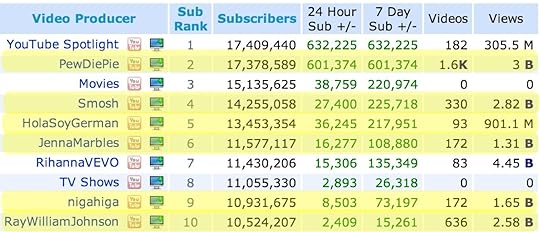
(Via VidStatsX)
We’re All Content Creators
In every social network, creators are consumers and consumers are creators. On Facebook, for example, we share stories, upload photos and videos, chat with friends, and leave comments — constantly blurring the lines between content creation and consumption. However, while Facebook is a service that over 1 billion people use regularly, it’s also a platform where content creators do NOT get paid a portion of the $1.6 billion in annual ad revenue being generated.
This is part of a social contract that we have with media companies, brands and consumers. Media companies serve us ads in exchange for the content we consume. However, YouTube is different–they serve ads AND pay content creators for the eyeballs they generate – but many are upset with the revenue split. At the same time they’re happily using sites like Twitter and Facebook, and not receiving a dime.
YouTube is a social network where users can create content. Creators on YouTube are able to monetize their efforts directly on the platform. Facebook, Twitter, Vine, and Instagram are also social networks where users can create content. But THESE content creators are UNABLE to monetize their efforts directly from these platforms.
To their credit, YouTube has successfully upended the traditional social contract, allowing us — as both creators and consumers — to generate income from our content. If we’re upset with how little YouTube pays creators, then shouldn’t we be even more upset that Facebook and Twitter pay nothing at all? Isn’t this a double standard?
Youtube Is The Launch Pad
Critics have pointed out that it’s difficult to make a living based on YouTube’s revenue split. That may be the case for many creators. However, the platform allows them to build an audience. Many creators understand this and are leveraging their audiences for brand deals, merchandising, and in some cases, even making the jump to traditional entertainment.
The revenue split on YouTube may be less than ideal, but it’s a means to an end–an audience. As investor Mark Suster adeptly points out, YouTube is the “world’s best customer acquisition for video consumers to get them to come to your O and O.” For top YouTubers, leaving YouTube is akin to Michael Phelps avoiding the Olympics because it doesn’t pay well. There is no other worldwide stage that compares.
YouTube has provided an infrastructure, which, beyond YouTube’s shear scale (with 1 billion monthly unique monthly users), has been aggressive in creating a sticky experiences for both creators and consumers alike. Much more than a video-hosting platform, YouTube is the second largest search engine. Furthermore YouTube facilitates connections to cultivate audiences, via:
Subscriptions (which is only getting better with recent updates)
Presence in 56 countries across 61 languages
Multi-platform distribution via Mobile and even Xbox apps
Education and production resources for creators to use free of charge
The list goes on
Ten years ago, creating webseries that would get millions of viewers without a significant investment was virtually IMPOSSIBLE. You would need to build a site, your own video player, hosting service, then begin to work on cultivating an audience. Today, we live in an age when a little desire and a webcam is all one needs to be a content creator–YouTube provides the stage. The platform has enabled just about anyone to be a filmmaker, vlogger, and entrepreneur. And for the first time in history, content creators can have an audience of millions without having a cable, network, or theatre distribution deal.
Google And MCN’s
Lastly, trend stories around the state of MCN’s have speculated that YouTube would rather see MCNs disappear and MCN’s must develop an off YouTube platform to survive. Regardless of the latter, YouTube’s actions don’t support the former. Google, which owns YouTube, lead a $35 million round of funding in one of the MCNs, Machinima, earlier last year.
Furthermore, MCNs have contributed to YouTube’s growth and bottom line in several areas. Hank Green — YouTube creator and co-founder of VidCon — echoed this sentiment in the comments of Calacanis’ blog post, stating that YouTube loves MCN’s for two reasons: “1. When an MCN gets acquired or takes investment, that sets a value on the YouTube ecosystem. So if a network (simplified numbers here) with a million monthly views gets acquired for a million dollars, analysts can argue that content is worth a dollar per monthly view, which drastically increases the value of YouTube and thus Google’s stock price. 2. YouTube is basically outsourcing support and liability to MCNs in exchange for zero dollars. YouTube has all but stopped supporting partners. Instead, partners join up with MCNs and the MCNs provide support. MCNs also act as a liability buffer, taking responsibility for potential copyright and other legal problems so that YouTube doesn’t have to worry about it.”
MCNs also act as a massive sales force for YouTube. Each sale an MCN makes is a sale for YouTube — whether it’s indirectly, through dollars going to creators for brand integrations, or directly via pre-roll and banner inventory.
Finally, whether or not MCN’s are successful in the long run, is up to MCN’s, but it certainly wouldn’t be because Google is ‘unfair’. By comparison, Facebook is harsher to third parties building businesses on their platforms. Facebook has a track record of replicating features of competitive businesses as well as shutting off access to those with features similar to their own – most recently shutting down API access to Vintage Camera (an instagram style photo app) and recently blocked messaging app Message Me. Even with YouTube’s recent announcement, that they will get involved with disputes between MCN’s and creators, plenty of notice to adjust to YouTube’s guidelines. No one is being shut down, Facebook style, without notice.
Several MCN’s have cultivated off-YouTube online video presences, which could be perceived as direct competition with YouTube. Most recently Alloy merged with Break, Maker acquired Blip, and last year The Collective purchased Metacafe. Rather than revoking access to the platform the way Facebook has to many companies by claiming violations of a section of its terms of service related to “competing” social networks, YouTube has allowed (if not encouraged) these moves to take place.
Audience Is The Asset
For creators and MCN’s the opportunity lies far beyond Google’s revenue splits – instead it’s with the ability to build sustainable businesses and brand. Utilizing YouTube as the ultimate acquisition funnel, large and small creators are creating alternative revenue streams capitalizing on their own IP – selling merchandise, concert and speaking tours, mobile games and even magazines. Finn Harries (one half of YouTube phenomenon Jacksgap), described YouTube as a “great launch pad for our [Jacksgap] brand. We were able to test content that worked, interact with and gain an audience and being able to monetize our videos allowed us to invest our revenue into expanded our brand into other areas like our .com and the digital store front, which is launching soon. However even better than that Youtube has allowed us to create a company.”
Final Thoughts
So where does this leave us? There’s room for improvement on YouTube, and it would be great for creators and MCN’s if YouTube increased the percentage they pay creators. That said, YouTube has been a forgiving partner — providing a revenue stream to creators, and allowing businesses to replicate many of their features in a way that a Facebook would never allow.
For many YouTubers, and MCN’s, the opportunity lies far beyond adsense and revenue splits – instead it’s with the ability to build businesses and brands. The resources and sticky experience YouTube facilitates has allowed creators to cultivate audiences they’d be unable to do independent of the platform. The visibility, communication, and connection with audiences is invaluable. What remains to be seen is which players will develop a profitable model from these communities and which ones will not.

December 30, 2013
5 Steps to Improving the Customer Experience with Big Data
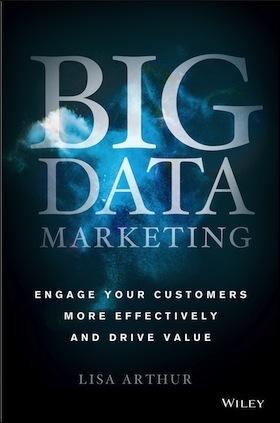
Guest post by Lisa Arthur, CMO of Teradata Applications and author of the new book Big Data Marketing (Wiley). Follow her on Twitter @LisaArthur.
Technology advancements are making it easier for people to constantly, effortlessly and sometimes unknowingly generate massive amounts of data every second. Lurking in the sprawling data pipelines of global corporations are complex tangles of information that have the potential to become your company’s most profitable resource. The opportunity has never been greater for savvy marketers and data analysts to team up and untangle the “data hairball,” gain insights into behavior, anticipate trends and make their customers’ experiences more relevant and timely. By working together on a more strategic level, they will have the competitive advantage they need to innovate, increase revenue and improve the bottom-line. The approach is called a data-driven strategy, which I outline in my new book.
This five-step roadmap is a summary of a data-driven approach covered in more detail in my book.
1. Get Smart. Get a Strategy. Develop a data-driven approach that will position your entire organization for customer-centric success.
All companies should begin with a vision and strategy. It will require some time investment, but will set you and your team on the right course over the long term.
The insurance and financial services leader Nationwide began feeling the cracks in their decentralized data silos back in 2005. They recognized the limitations of their existing systems and were missing the agility, speed and flexibility needed to succeed in its marketplace. They knew it was time to find a better way so they could deliver an “On Your Side” experience to their customers. With a system that had grown to more than 100 terabytes of user data, about 10 times the size of the entire printed U.S. Library of Congress, Nationwide had the vision to leverage its data as a strategic asset for true enterprise analysis and management. They wanted a data-driven approach so they could make forward-looking strategic and tactical business decisions. The effort began with the creation of a mission statement and formal vision for the project. Nationwide has executed that vision and, in the process, migrated from a product-centric company to a customer-centric company.
2. Tear Down the Silos. Become a highly responsive organization by fostering an environment of collaboration, coordination and connection.
Nearly 65 percent of marketers agree that silos within their marketing department prevent them from having a holistic view of a campaign across channels. Source.
Organizationally, marketers need to tear silos down within their own team and with IT and other organizations to put the customers at the center of their integration and interaction strategy.
There’s enormous value in using data together and proactively as a team. A great example from my book of tearing down the silos is happening at a company called International Speedway Corporation (ISC). They manage racetracks that host NASCAR events. They had a very key business imperative to be more relevant and data driven in engaging their fans. They have racetracks across the U.S. and each have different customers called guests or fans and they have different business requirements based on each event. So their IT and marketing teams worked together. They put all their data in one place. They were able to understand the holes in their data and were able to augment it. Today, they run over 1,100 different micro-segmented conversations all with no increased staff or cost. They’ve been able to improve the engagement with their fans in a more personal and relevant way. They saw revenue upside from their events and overall made bottom-line improvements.
3. Untangle the Data Hairball. Make sense of all your data, apply analytical insights and inform more innovative and relevant messaging.
So how do you access the data and use it to be more effective and efficient? How do you apply big data analytics to inform your marketing messages, to test real-time interaction strategies and to innovate your marketing engagement? How do you do this while data is constantly streaming in? As Brian Solis put it in a previous post about big data, are you “acting as a human algorithm and extracting insights with intention”?
The best way to get started is by defining a pilot project focused on a specific business objective. One example could be examining the path of interactions that lead to defecting customers. It’s less daunting to start with a discreet project where you can identify all triggers for customer attrition. Find data sources that apply. Use the pilot to analyze each online and offline channel including your call center and physical locations. Don’t just analyze everything that’s already in place. Use the pilot as an opportunity to experiment. Try new approaches and offers based on insights gained.
If you can successfully untangle one strand of the data hairball, you will have gained the experience and knowledge to tackle the next strand.
4. Make Metrics Your Mantra. Prove that your efforts increase business value by providing transparency and driving accountability into every layer of the marketing organization.
Raising the visibility and value of your data-driven marketing work is an essential part of the whole strategy.
In my CMO role, my team and I began our own journey toward becoming data-driven marketers. We developed a five-prong scorecard to report marketing’s contributions and value. The scorecard measured demand, customer satisfaction and retention, sales productivity, market category leadership and overall effectiveness of our team. We soon learned we didn’t have everything in place to track cross-channel interactions, yet. We decided to focus on a pilot – tracking cost per lead and the return on investment (ROI) with short-term goals and we reported our results at the board level. Over time, we established credibility and momentum and began to align metrics wider across the marketing organization and then the entire enterprise with larger, broader-based objectives.
5. Process is the New Black. Build modern, purposeful activities that are made possible by marketing technology and automation advances.
In order to truly embrace a data-driven marketing strategy, departments must operationalize the insights gained from analyzing data. Being agile enough to pivot to changing market conditions and big data insights plus further segment and personalize a creative execution is the new expectation that marketers must meet and that customers expect.
Marketing teams realize there are missed opportunities by not using data to drive marketing decisions faster. In fact, 45 percent of marketers agree that data is the most underutilized asset in the marketing organization. Source.
Using software tools to help automate processes can be helpful as roles, campaigns and data complexities increase. A tool like an integrated marketing management (IMM) system can help marketers process massive amounts of information and do things faster, more relevantly and with greater competitive advantage.
Our first mission, as always, is to develop trust with our customers. We do this by honoring the data they offer us, avoiding overly-intrusive communication techniques and understanding their purchase patterns and behaviors well enough so we can begin to proactively meet their needs. Then we deliver relevant messages and offers when and where our consumers want to receive them.
True one-to-one marketing is about having a conversation with one. As digital marketers embrace digital marketing attribution – the ability to understand an individual – our consumer relationships begin to operate on a much more intimate level. It’s here where true personal interactions versus broad marketing transactions exist and thrive.
It’s critical that we take the opportunity to dig in and understand the digital disruption that’s happening so we can create a true data-driven marketing revolution filled with a constant stream of insights. Perhaps this is an area where focus, funding and experimentation could be just the inflection point your business is needing.
Although big data is still a nemesis to many, it’s time to stop pushing back with safe and familiar marketing initiatives that no longer serve our customers. It’s time to make data friendly and use it to innovate. Let’s take marketing to a place where data is no longer something coming at us, but instead is a natural part of our thinking, processing and decision making. This is a huge, humbling and exciting opportunity to become trailblazers in the new world of big data marketing.
What’s been your experience as you wrangle with your company’s own data hairballs?

December 23, 2013
The Future of Business is Creating Meaningful and Shareable Experiences
Special guest post by Peter Guber, noted business leader and author of best-seller, Tell to Win
While everyone’s talking about social media, professional motivation, or the need for change in business, people who are actually looking for answers to bring about change are left to draw upon the classic treatises of Peter Drucker, Dale Carnegie, Geoffrey Moore, Tom Peters, et al. Yet, what those pundits don’t provide is the “how to” shape your role and opportunity in this evolving landscape of consumerism. There’s an old saw, “technology changes, people don’t.” The tsunami of social, mobile, real-time, technology is disrupting everything; this means that for success one must make the change of how one influences. What changes is how people influence, are influenced, along with how, when and where they make decisions.
There is a plethora of material on the “new” tools and there is no need for another book that talks about the same businesses that are using new technology to pursue relevance. Nor do we need another book for dummies or wannabes. What is required are answers and experience paired with the concrete data that arms us with the confidence to make decisions with intelligence and strength in a time when many surrender to gut-based decisions or general assumptions.
This is where Solis’s content is king: he’s a digital analyst studying technology and its impact on business. This is abundantly clear in the book, as he continually uses real world analytics to make his case that there’s a new generation of connected consumers (Generation C as he calls it) on the opportunity horizon that are behaving differently, yet the existing touch points (those typically aligned with the traditional funnel) are missing or underestimating them.
What is to appreciate here is Solis’s application of digital anthropology into a dialogue that’s often rooted only in technology and trends. What’s the Future (of Business), his “WTF”, will shape this discussion and its impact, adroitly breaking down consumer decision making to four moments of truth. He shows that these moments, whether b2b, b2c, or any industry where people rely on any aspect of the Internet to get information, create a new epicenter of influence. This “influence loop”, the moniker he gives it, claims to affect every moment of truth, rich with the shared experiences that populate Youtube, blogs, review sites, communities, and apps.
His point is crystal clear. What will happen in a world where a Google search is not the first step in discovery? What will be the reaction when a web site isn’t the result people desire? What will happen when people place greater trust on informed or experienced peers first? There is clearly a different kind of connection, and breathing real, shared experiences are everywhere. Truth is, they can be readily and easily discoverable. And, to SEO your way alone to be relevant will turn into SOS. That is the point.
The core value in Solis’s book is its coaching on how to create and invest in meaningful and sharable experiences, and this is the future of business that Brian preaches by making the book an experience in and of itself.
I get this; he created a coffee table book for business by studying UX to better learn how today’s consumer reads, shares, and why. His congruence of feet, tongue, heart, and wallet all going in the same direction is proof of his authenticity, and promise of his premise. He fashioned with the team at Mekanism to create what he named an “analog app.” It’s textural, emotional, and colorful, even the paper is thick and unique to flip through.
He made a physical book matter again even in a digital era.
Solis professes that you can do this, and by following his code and credo, imagine what you can do…
Photo Credit: Jim Alden, @techfrog



